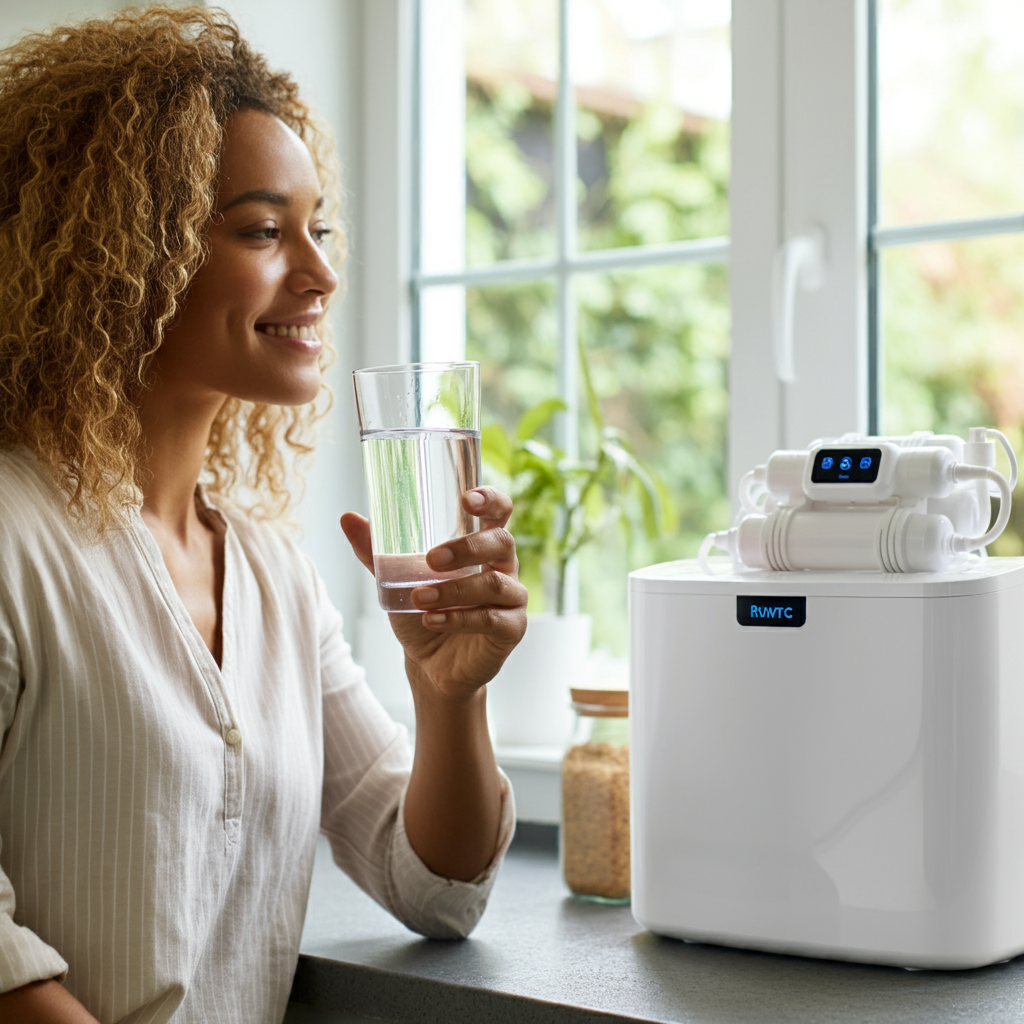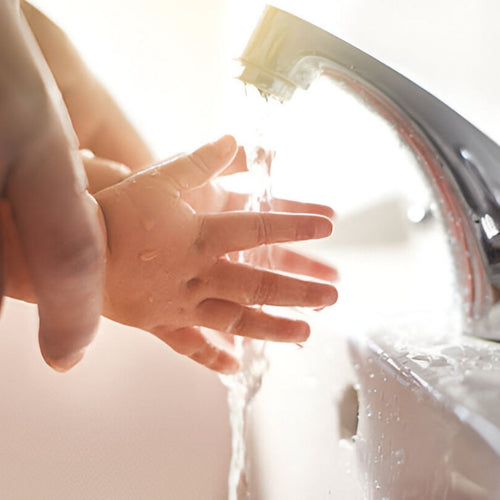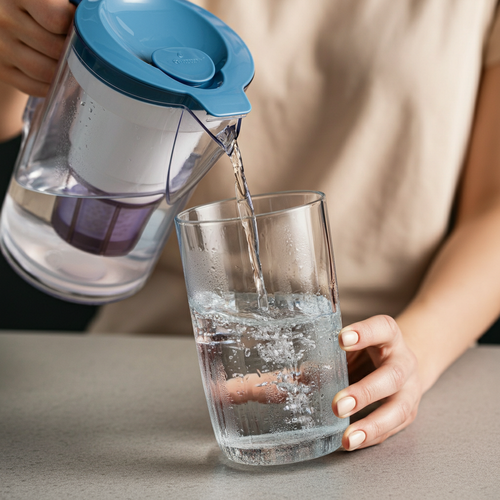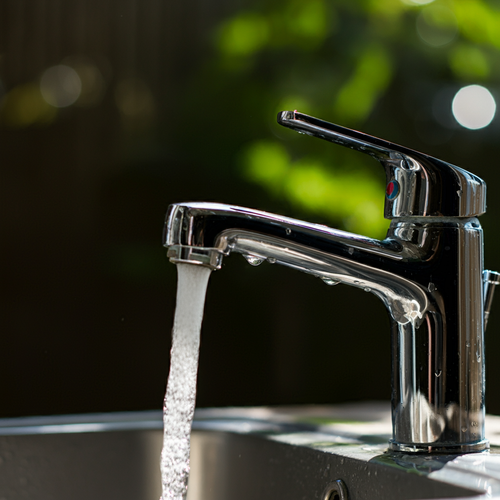Reverse osmosis (RO) water filters deliver exceptional water purity by removing a wide range of contaminants, improving taste, and enhancing safety. At SoftPro Water Systems' dealer program, we're passionate about bringing you the best water solutions. With years of experience in the industry, we recognize the vital role Reverse Osmosis Systems play in achieving optimal water quality. They go beyond basic filtration to provide truly purified water for drinking, cooking, and every household need.
How Does Reverse Osmosis Work?
Reverse osmosis is a multi-stage filtration process that uses pressure to force water through a semi-permeable membrane, effectively removing impurities. Let's break down the typical stages:
- Stage 1: Sediment Filter. This initial stage captures larger particles—dirt, rust, and sediment—protecting the sensitive SoftPro RO membrane in the subsequent stage.
- Stage 2: Whole House Water Filter with Carbon. This filter targets chlorine, chloramines, and other chemicals that negatively impact the taste and odor of water. It also removes organic compounds, enhancing overall water quality.
- Stage 3: Reverse Osmosis Membrane. The heart of the SoftPro RO system, this semi-permeable membrane has microscopic pores that allow water molecules to pass through while effectively blocking dissolved solids, heavy metals, and other impurities.
- Stage 4: Post-Filter. After passing through the SoftPro RO membrane, water undergoes a final polishing through a post-filter to ensure optimal taste and clarity.
This multi-stage process ensures comprehensive filtration, leaving you with pure, refreshing water.

What are the specific benefits of using an SoftPro RO water filter?
Here are the specific advantages of incorporating an SoftPro RO water filter into your home:
- Improved Taste and Odor. One of the most immediate benefits of SoftPro RO Filters filtration is the noticeable improvement in taste and odor. By removing chlorine, chloramines, and other impurities, SoftPro RO filters water offers a cleaner, fresher taste. In fact, a study by the Water Quality Association (WQA) revealed that 90% of participants reported a significant improvement in water taste after installing an SoftPro RO Filters system. This makes drinking water more enjoyable and enhances the flavor of coffee, tea, and other beverages.
- Removal of Harmful Contaminants. SoftPro RO filters excel at removing a wide array of contaminants, including:
- Heavy metals: Lead, arsenic, mercury, and chromium. Reverse osmosis removes up to 98% of lead and 97% of arsenic, according to WQA studies. These heavy metals, often leached into water from aging pipes or industrial pollution, pose serious health risks.
- Dissolved solids: Salts, minerals (including calcium and magnesium, which contribute to hard water), nitrates, and fluoride. While some minerals are beneficial, excessive levels can affect taste and may be a concern for individuals with specific health conditions. SoftPro RO Filters removes up to 99% of dissolved salts.
- Microorganisms: Bacteria, viruses, and protozoa. These microorganisms can cause illness, especially in individuals with weakened immune systems.
- Other: Pesticides, herbicides, and pharmaceuticals. A 2023 study in the Journal of Water Supply: Research and Technology—AQUA found that SoftPro RO filters systems reduced pharmaceutical contaminants by an average of 95%. These contaminants are increasingly prevalent in water supplies and can have long-term health effects.
The Environmental Protection Agency (EPA) sets maximum contaminant levels (MCLs) for drinking water to safeguard public health. SoftPro RO Filters systems help ensure your water meets these standards, providing confidence in the safety of your drinking water.
- Healthier Drinking Water. By effectively removing potentially harmful contaminants, SoftPro RO Filters water contributes to a healthier lifestyle. The Centers for Disease Control and Prevention (CDC) emphasizes that lead exposure can cause developmental issues in children. SoftPro RO filters filtration significantly reduces this risk. SoftPro RO Filters water is particularly beneficial for:
- Pregnant women
- Infants and children
- People with compromised immune systems
- Better for Cooking and Beverages. SoftPro RO water not only tastes better but also enhances the flavor of food and beverages. Using it for cooking allows the true flavors of ingredients to shine. It also prevents mineral buildup in appliances like coffee makers, extending their lifespan by up to 30% according to a study by [Appliance Manufacturer or Research Institution], and improving efficiency.
- Cost Savings (Long-Term). While the initial cost of an SoftPro RO Filters system may be higher than simpler filters, it offers long-term cost savings. A family of four consuming 10 gallons of bottled water weekly can save around \$500 annually by switching to an SoftPro RO system. You'll save money, reduce plastic waste, and enjoy the convenience of readily available purified water.
Reverse Osmosis vs. Other Water Filters
It's crucial to understand how reverse osmosis compares to other common types of water filters:
- Activated Carbon Filters: Effective at removing chlorine, sediment, and some organic compounds, but less effective than SoftPro RO filters for dissolved solids and heavy metals.
- Pitcher Filters: Convenient for small-scale filtration, but with limited capacity and contaminant removal capabilities.
- Whole-House Filters: Provide basic filtration for the entire home, but typically don't remove the same range of contaminants as an SoftPro RO Filters system.
- Water Softeners: Address hard water issues by removing calcium and magnesium, which SoftPro RO Filters also reduces, but they don't provide the comprehensive contaminant removal of SoftPro RO Filters.
It's important to note that reverse osmosis is not a dedicated water softener. While it removes some hardness-causing minerals, it doesn't prevent scale buildup. If you have hard water, consider a dedicated water softener in addition to an SoftPro RO Filters system. At SoftPro Water Systems, we offer a comprehensive range of water treatment solutions, including both SoftPro RO Filters systems and water softeners, tailored to your specific needs.
Choosing the Right Reverse Osmosis System
Selecting the ideal SoftPro RO system for your home depends on several factors:
- Water Quality: Begin with a water test to identify specific contaminants and assess the required filtration level. This informs your choice of a system that effectively addresses your water quality concerns.
- Household Size: Consider the number of people in your household and daily water usage. Choose a system with the appropriate capacity (gallons per day) to meet your needs.
- Budget: SoftPro RO Filters systems range in price. Set a realistic budget and explore options within that range.
- Features: Consider features like leak detection, automatic shut-off, and filter life indicators for enhanced convenience and efficiency.
When choosing an SoftPro RO Filters system, look for the NSF certification mark. NSF International rigorously tests and certifies water filters to ensure they meet stringent quality standards. Consider reputable brands like SoftPro and iSpring, known for their performance and reliability.
At SoftPro Water Systems, we offer a curated selection of high-quality SoftPro RO Filters systems for various needs. Our experts can guide you in choosing the right system for your home and provide professional installation.
Addressing Common Concerns about Reverse Osmosis
While reverse osmosis offers significant benefits, it's important to address common concerns:
- Water Waste: Traditional SoftPro RO systems produce wastewater during filtration as the SoftPro RO membrane rejects contaminants. However, modern systems are designed for greater efficiency. Some models achieve a 1:1 pure water to wastewater ratio, minimizing waste. Features like permeate pumps further enhance efficiency.
- Mineral Depletion: SoftPro RO Filters removes beneficial minerals like calcium and magnesium along with harmful contaminants. However, you can easily remineralize your SoftPro RO water using a remineralization filter, which adds back essential minerals, improving taste and healthfulness. Alternatively, mineral drops can be added to your water.
- Maintenance: SoftPro RO Filters systems require periodic maintenance, including regular filter replacements to ensure optimal performance. The frequency depends on factors like water usage and quality. Typically, sediment filters need replacement every 6-12 months, carbon filters every 6-12 months, and SoftPro RO Filters membranes every 2-3 years. SoftPro Water Systems offers comprehensive maintenance plans to ensure your SoftPro RO Filters system continues performing optimally.
Real-World Examples
Let's explore real-world applications of reverse osmosis water filters:
- Example 1: Protecting a Family from Lead Contamination. A family residing in an older home with lead pipes is concerned about potential lead contamination in their drinking water. They install an SoftPro RO Filters system to effectively remove lead and other contaminants, ensuring their family has access to safe, clean drinking water.
- Example 2: Enhancing the Coffee Experience. A coffee enthusiast seeks to brew the perfect cup of coffee, free from the taste and odor imparted by chlorine and other impurities found in tap water. By switching to SoftPro RO Filters water, they experience a significant improvement in the flavor and clarity of their coffee.
Benefits and Drawbacks List
Here's a concise list of the benefits and drawbacks of reverse osmosis water filters:
Benefits:
- Improved taste and odor of water
- Removal of a wide range of harmful contaminants
- Healthier drinking water, especially for vulnerable populations
- Better for cooking and beverages
- Cost savings in the long run by reducing bottled water consumption
Drawbacks:
- Higher initial cost compared to simpler filters
- Water waste (though modern systems are more efficient)
- Removal of beneficial minerals (can be addressed with remineralization)
- Requires periodic maintenance and filter replacements

Origin Story
The technology behind reverse osmosis was initially developed in the 1950s for desalinating seawater. Researchers at the University of California, Los Angeles, made significant advancements in SoftPro RO Filters technology, making it practical for water purification. Since then, reverse osmosis has become a widely used method for purifying drinking water in homes, businesses, and industrial settings.
Purified Water, Enhanced Living: The Advantages of Reverse Osmosis
In conclusion, reverse osmosis water filters offer a highly effective solution for purifying your water and enjoying a range of benefits. By removing contaminants, improving taste, and enhancing the safety of your drinking water, SoftPro RO systems contribute to a healthier and more satisfying home environment.
Key Takeaways:
- Superior Filtration: The multi-stage filtration in SoftPro RO Filters removes a broad spectrum of impurities, from sediment and chlorine to heavy metals and microorganisms, ensuring your water meets or exceeds EPA standards.
- Enhanced Taste and Quality: SoftPro RO Filters filtration significantly improves the taste and odor of water, making it more refreshing. WQA studies show a 90% satisfaction rate in taste tests among SoftPro RO water users.
- Healthier Lifestyle: Clean, purified water from SoftPro RO Filters systems contributes to a healthier lifestyle, especially for vulnerable groups like pregnant women and children.
- Long-Term Value: While the initial investment in an SoftPro RO Filters system may be higher, the long-term cost savings from reduced bottled water consumption and appliance maintenance make it a worthwhile investment.
At SoftPro Water Systems is dedicated to providing, we are dedicated to providing our customers with the best water solutions. We offer a curated selection of high-quality SoftPro RO Filters systems from trusted brands like SoftPro and iSpring, along with expert advice and professional installation services.
Ready to transform your water and enhance your life?Get in touch with us today for a free water analysis and consultation. Let our experts help you choose the perfect SoftPro RO system for your needs.


















![Aldex Premium 10% Cross Link Resin for Water Softener [High Capacity]-SoftPro® Water Systems](http://www.softprowatersystems.com/cdn/shop/files/Aldex_10_Cross_Link_Resin_Premium_High_Capacity_for_Water_Softener_600x.jpg?v=1735853599)




















